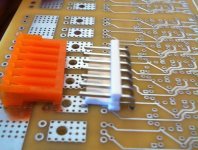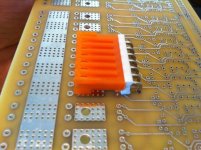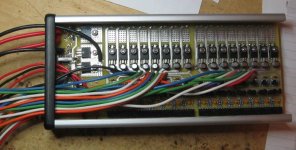Gregb
100 W
why does the web page refer to 12/16 ? (in configurations of 12/16, 24 and 32-channels.) This may be misleading to those who have 8s setups....
Gregb said:why does the web page refer to 12/16 ? (in configurations of 12/16, 24 and 32-channels.) This may be misleading to those who have 8s setups....




Nate said:Gary -
No go for me, I had to buy the taller caps since the others were out.
Nate said:How will the LEDs work on this board compared to the v2.x? Will they be on for a shorter time?
Thanks - Nate
Nate said:Gary -
No go for me, I had to buy the taller caps since the others were out.
How will the LEDs work on this board compared to the v2.x? Will they be on for a shorter time?
Thanks - Nate
fechter said:On the LEDs, it will depend on where the charger voltage is set. If you crank the CV setting higher, all the LEDs will light up at end of charge, but there will be a bit more heating. If you get the voltage just right, they will all light up dimly when everything is balanced but not generate much heat.
Nate said:Gary - How are the instructions coming along?
- Nate
GGoodrum said:fechter said:On the LEDs, it will depend on where the charger voltage is set. If you crank the CV setting higher, all the LEDs will light up at end of charge, but there will be a bit more heating. If you get the voltage just right, they will all light up dimly when everything is balanced but not generate much heat.
Actually, you don't want to set the charger/supply voltage higher than the point just before the shunts, and the LEDs start to come on. If the shunts are on at the end, there will be current flowing through so the low current end-of-charge detection logic won't trip. With a balanced pack, the sum of the cell voltages will be just below the point the shunts/LEDs turn on.
-- Gary
Sorry to bug you, but are the parts lists going to be revised in the light of the connector issue? I'm about to get the board, but want to hold off getting parts until the list has been 'debugged' a little. It's lots more expensive ordering internationally from mouser, and I want to get it right first time if possible...GGoodrum said:The connector issue threw me a bit of a curve, earlier today, or I would've finished them today. I'll get them done before the end of the weekend, for sure.
I must be psychic...AndyH said:Everyone hold on ordering parts.
geoff57 said:Hi
So is the zephyr board good to buy or should we hold off till the problem has been identified.
For anyone that is interested I will shortly have parallel balance boards ideal to use with the zephyr they have 1 mm tracks top and bottom, it can be configured 2 ways, the first is with the standard 22 gauge JST HX connector with silicone covered wires with capabilities for 20Ah, the second is with 18 gauge wire output that can be fitted into a row of pads at one end of the board this is ideal for mateing up with the zephyr balance connectors it also gives you an extra JST HX input connector making 5 so capable of up to 25Ah. The boards come with lacquer covering to keep the tracks insulated also a pics of foam is provided for the underside this stops shorts where the solder points are.
Geoff
Gregb said:What happens if we buy everything and end up with Andy's problem??
Andy I expect you don't need help trouble shooting but have you for example replaced all the capacitors. In my experience, 30+ years, an out of spec capacitor can cause all sorts of problems. Once chased a problem for over a week because had been assured these new fangled tantalums never broke down........


won't go into my Valve stories. and the Miller effect.

